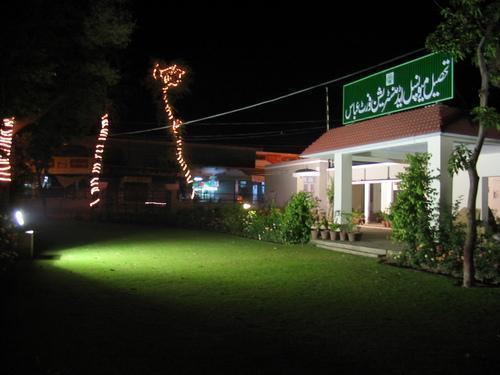Country Pakistan No. of Tehsils 5 | Time zone PKT (UTC+5) Area 8,878 km² | |
 | ||
Tehsils BahawalnagarChishtianFort AbbasHaroonabadMinchinabad | ||
Bahawalnagar District (Urdu: ضِلع بہاولنگر), is a district of Punjab province in Pakistan. Before the independence of Pakistan, Bahawalnagar was part of Bahawalpur state governed by the Nawab of Bahawalpur. The city of Bahawalnagar is the capital of the district. Its population according to the 1998 census was 2,061,000 people.
Contents
- Map of District Bahawalnagar Pakistan
- Administration
- Languages
- History
- District boundaries
- Population and literacy rate
- References
Map of District Bahawalnagar, Pakistan
Administration
The district of Bahawalnagar is spread over an area of 8,878 square kilometres comprising five tehsils and 118 Union Councils:
Languages
According to the national census of 1998, the predominant first language in the district was Punjabi, spoken by 94.6% of the population, followed by Urdu at 3.7% and Saraiki at 1.2%.
History
Nawab Bahawal Khan-1 as second nawab of Bahawalpur ascended the throne in 1746 A.D. He was successful to a great extent in organizing and repopulating both his old and new possessions, but his enemies Wadera Muhammad Khan Kehrani, Bahadur Halani and others were envious of his prosperity and bothered him continuously.
Muhammad Mubarik after ruling successfully for years died issueless in 1772 A.D. He was succeeded by nephew Sahibzada Jafar Khan alias Nawab Muhammad Bahawal Khan-II in 1772.
District boundaries
The boundaries of Bahawalnagar in the east and south touches the Indian territory while Bahawalpur district lies on its west and river Sutlej flows on its northern side. District Bahawalnagar spreads over an area of 8878 square kilometers.
Population and literacy rate
The population of Bahawalnagar, according to the 1998 Census of Pakistan, is 2,061,447.
The sub-campus of Islamia University is located here. Presently this sub campus is offering limited subjects for postgraduate education and graduation while there is only one post-graduation degree college for boys with an area nearly equal to 75 acres, formed in 1945, and one for girls.
